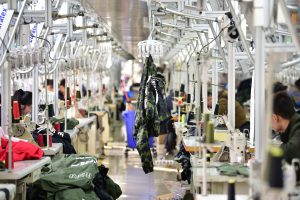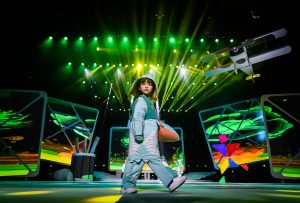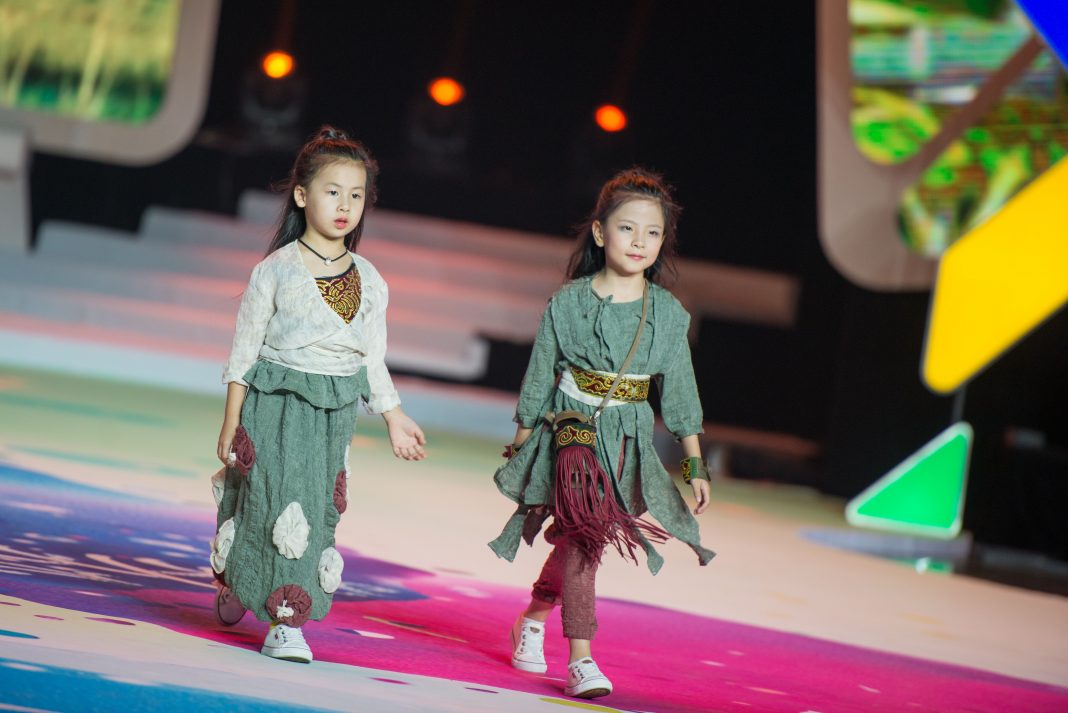A modified version of this article appeared at https://www.moneycontrol.com/news/business/zhili-has-become-the-childrens-garment-centre-of-the-world-4700261.html
Zhili has become the children’s garment centre of the world
RN Bhaskar 00 4 December 2019
 Today, Zhili town is he largest centre in China for making children’s garments. The town and its surroundings exhibit lush greenery, ever flowing streams and clean roads. But it wasn’t always so.
Today, Zhili town is he largest centre in China for making children’s garments. The town and its surroundings exhibit lush greenery, ever flowing streams and clean roads. But it wasn’t always so.
Located in the hinterland of China’s Yangtze river delta economic circle, Zhili town covers an area of 90 square kilometers, with a permanent resident population of more than 450,000. It squats in the midst of three waters – the Tau Tang in the South, Taihu lake in the North, and Beihengtang in the middle. True to the adage that water breeds life, the region developed ancient water systems. In 2016, the neighbouring Yigao village was selected as a model irrigation village by the World Heritage Foundation. This village too had a fixed place in the past for its weaving. Water has contributed to river transport and lots of business for the nearby Hujiong harbour. On the west bank of the lake lies the old city; the east bank hosts the new city.
But in between the past and the present came short-sighted industrialisation. Three decades ago, the area known as Zhili and the adjoining Yu village in Zhejiang province were hostage to some of the crudest forms of industrialisation. Many still remember that there used to be a 30,000-square-meter quarry in the vicinity. It had abandoned its ancient roots that lay in weaving, knitting and pastoral settings. It used to embrace embroidery, shipbuilding, book printing and book trading industry in older times.
Then the community, with support from the local government, took over – throu careful planning and social governance (http://www.asiaconverge.com/2019/12/china-begins-promoting-social-governance/). Both decided to go back to the roots. Zhili was known for its flourishing weaving industry in history. Thanks to social governance, government funding, startup schemes with financial incentives and accompanying tax laws, they decided to develop the areas as a Children’s wear centre., Zhili has today emerged as the world’s largest production base for children’s wear.
The neighbourhood changed. Streams were cleaned up. Greenery was protected. Birds returned. From March to October each year, egrets come for partying in Zhili. Places that were once granaries were converted into book-bars, playgrounds and cinemas. Rongcun, a nearby town, which specialised in embroidery is today a bedding production area. Too Zhili came into existence with courage and hope.

The China Weaving Children’s Wear market came into existence in 1997. Over the past 20 years, it has attracted numerous wholesalers from all over the country to make their purchases at the Zhili south gate. In the north cashmere sweaters are popular. These sweaters are exported from her to around 200 regions in China. Founded in 1997, Jinjie Industrial Company Ltd was one of the oldest enterprises in Zhili. It remains innovative even today. Axiang is the helmsman in this area, legend among Zhejiang merchants. Axiang Heavy Industry is one of the top 500 private enterprises in China, Wepon Green is part of an intelligent manufacturing complex for new materials for industrial parks,

Garment weaving and hitech industries nestle together. There is Zhejiang Dongni electronics co– one of four listed companies in Zhilu town. There is Tony Electronic engaged in micro alloy wire and other metal matrix composite materials research and development, production and sale, and their products are mainly used in the fields of consumer electronics, photovoltaic, new energy vehicles, and medical. It has now become supplier for world top 500 companies such as Apple, Belsen, Hitachi, Sumitomo, Foxconn, BlueThink Technology, and Bourne optical.
Hitech and garment manufacturing have blended. In Zhili you can witness the magic of a child’s dress being readied in just 45 seconds. Intelligent production and logistics further added to the bottomline of this industry. On an average 3,000 children’s clothes are transported out of weaving in out of Zhili every minute. The town is busy — even at night.
The children garment manufacturing area is a comprehensive platform integrating design, trading, display and release, and it is the only professional market named “China children’s wear”. It has a brand operation center, children’s clothing design center, children’s clothing museum, aiming at cultivating and incubating small-middle business.
Starting with a 0.58 sq km stretch street in the 1980s, the industry today occupies much of the town. Its output accounts for half of the domestic market. has formed a “hundred-billion” industry with children’s clothing, cashmere clothing, electronic information, metal materials and photovoltaic equipment.
The garment industry is huge. In 2018, according to Xinhua, it produced 1.3 billion pieces/sets of children’s clothes produced and sold by over 13,000 companies and 7,000 e-commerce enterprises, an annual sales reaching 50 billion yuan (about 7.33 billion U.S. dollars). Not all of it gets exported. China has a bustling and attractive domestic market as well.
Zhili alone has around 20,000 are children. In 2018, China alone accounted for 246 million children/ This is expected to reach around 250 million by 2023. The sales volume of China’s children’s wear market reached 160 billion yuan (US$ 22.75 billion – each yuan is approximately Rs.10). and this is expected to grow to 265.5 billion yuan (US$37.7 bn) in 2020.

That could explain why the biggest children’s garment brand in Zhili – QiruiDeze — prefers to sell only to the domestic market. But, according to Li Yun Pin, Chairman, and owner of the QiruiDeze brand, he is considering exports – especially to Africa. He is also considering shifting some of his production base to Vietnam or Laos — not India – to deal with increasing costs of Chinese labour. Studies are underway. Wherever automation makes sense and reduces costs, that will be done. The rest could go overseas. But India is important as a market. That is why he has begun looking for dealerships in this country as well.
He, like many other garment manufacturers, admits that were it not for Zhili, he might not have grown so big and so quickly. He has self-financed this brand and has around 1,600 stores (owned and franchisee) across China – all within 15 years. He employs around 5,000 people, but refuses to discuss investments (“my people are my biggest investment”, he says smilingly). “We will add more stores in years to come, and we will expand overseas as well,” adds Li. He admits that there are bigger players than him in the country, notably Balababa, which grew over four decades outside of Zhili. It has sales of 65 billion yuan ($8.8 bn) compared to his own 5 billion yuan ($711 million). But he is confident of becoming a 100 billion yuan company ($14.2 bn) within the next five years.
Today Zhili and the neighbourhood areas draw in buyers and tourists – some to purchase goods, some to marvel at what this region has done with ecology, farming and social governance.
With garment sales zooming, the growth of the e-commerce sector was inevitable. Even Li wants to sell through the internet – through stores like Alibaba and Amazon — by next year. Currently the number of e-commerce shops has swelled to 10,000.
In the heart of the town there is Liji street where all big brands must showcase their goods. That led to the prosperity of the fabric market. By the end of 2018, the fabric market emerged here. The locational advantage – of transportation through water, air and land –changed this agricultural market into a Taobao village. Taobao, in Chinese is an online shopping website, headquartered in nearby Hangzhou, and owned by Alibaba. Not surprisingly, just nearby, there is Cloud Town, where Alibaba has his centre of quantum computing (more on this later).
All this resulted in more jobs – and accommodation/construction — for workers who came here from other provinces. More than three-fourths of the population comes from other provinces – and are quaintly called immigrants. To ensure that there are no disputes on account of different cultural backgrounds, social governance has played a significant part. The aim is to prevent crime. Penalising culprits is a next step that comes in only when the first has failed.
The construction boom was dovetailed into plans for renovating the city into more efficient centres for weaving. Go to the city square – the government encourages dancing in the city square every evening. And walking through lanes that weave through greenery. The core of all this development is the search for the best talent, because no industry can survive without attracting the best of talent. That is a lesson India needs to learn even as political parties clamour for reserving 80% of jobs for locals.
Significantly, the town remembers its most famous statue – Zhino. She is the fabled daughter of a weaver who fell in love with a cowherd. Their romance was forbidden because both came from different communities. Hence both were banished. Today there are operas and stories about of how the two can be found at either end of a road called the Milky Way.

The romance finds its way into a booming child population in Zhili. And fashion parades in Zhili are also unusual. They have children strutting the stage. That has caused a market for child models to flourish. They can earn as much as $1,500 a day. But China does not want its children without education. Its social governance system steps in when a child misses school. Business must grow. But not at the cost of the future generations.










































COMMENTS